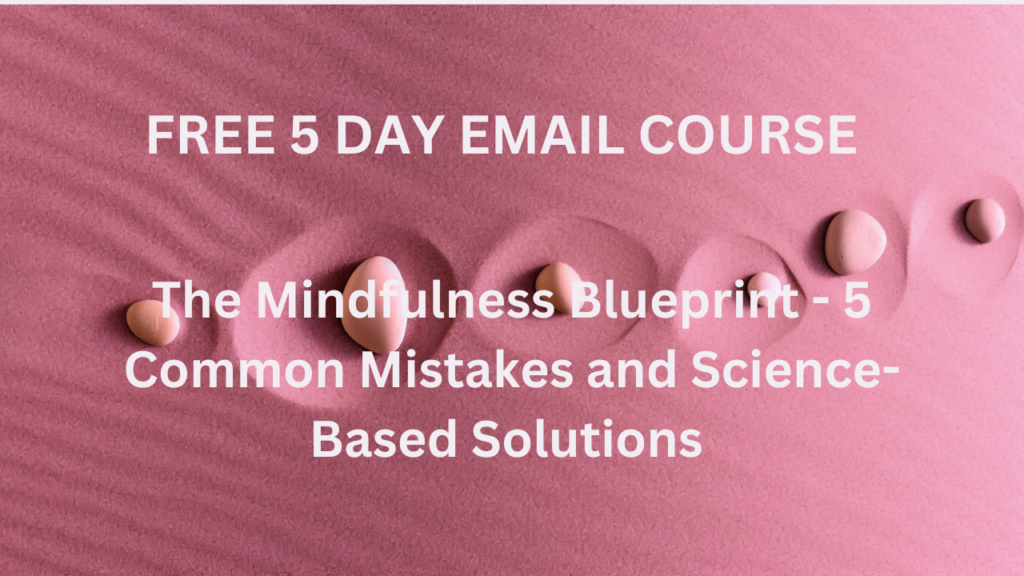Is your meditation more of a mosh pit than a zen garden? My Blueprint reveals five ‘aha!’ moments that transform frustrating practice into “wow, this works!” Learn why chasing calm backfires (and what actually works), with real-world techniques you can use anywhere. Includes our famous ‘Traffic Light Technique’ – turning road rage into road sage. Warning: This may cause unexpected outbreaks of inner peace.

“Simple, practical and actionable”
This Free 5 Day Email Course Gives You Everything You Need To Improve Your Mindfulness Practice
• Transform “Monkey Mind” to Mastery – Turn your wandering thoughts into mindfulness superpowers. Say goodbye to meditation guilt!
• Real-World Zen – Learn my famous “Traffic Light Technique” that works in chaos, not just in quiet rooms. Perfect for busy lives.
• Expert Shortcuts – Skip years of trial-and-error with battle-tested solutions from meditation masters who’ve been in your shoes.
• No-Retreat Required – Master mindfulness without changing your schedule. These techniques fit into your life, not the other way around.
• Lasting Change (Finally!) – Build a practice that sticks using our science-backed habit formation approach. Warning: May cause unexpected outbreaks of inner peace!
Written by Emiliya Georgieva, a spiritual and mindfulness coach with a passion for transforming meditation frustrations into “aha!” moments. After spending a decade teaching mindfulness in busy corporate environments, I discovered that the biggest breakthroughs often come from embracing our meditation “mistakes.”
Want to make sure this free course is “worth it” before you sign up?
Here’s everything that’s inside:
Mistake #1: Trying too hard to clear the mind completely – Many beginners believe mindfulness means having no thoughts, which creates frustration when thoughts inevitably arise.
Mistake #2: Inconsistent practice – People often meditate sporadically or only when feeling stressed, rather than building a regular routine.
Mistake #3: Judging one’s practice as “good” or “bad.” – When practitioners label their sessions this way, they create unnecessary pressure and anxiety.
Mistake #4: Becoming discouraged by wandering thoughts – Many people see a wandering mind as a failure when actually noticing that the mind has wandered IS mindfulness in action.
Mistake #5: Pursuing specific outcomes too aggressively – While mindfulness can reduce stress and improve wellbeing, attachment to achieving particular results often creates tension that undermines the practice.
